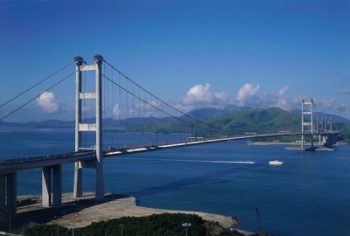
Bureaucratic tangles and hand-sitting is potentially causing the Port of Hong Kong to lose millions of dollars in lost business and seriously threaten its role as a leading container port, local reports cited industry players as saying.
The issue is an old one that revolves around the height restriction on the Tsing Ma Bridge, which spans the Ma Wan Channel and sits on the western approach to the city’s container for vessels from the north and the eastern approach to the Western Pearl River Delta ports for vessels from the south.
A report commissioned by the Hong Kong Liner Shipping Association and carried out by consultancy firm BMT Asia-Pacific found that the bridge’s height is actually 8.1 m higher than the official height of 62.1 m. This has been enabled by more modern and accurate measuring technology than was available when the bridge was first built 20 years ago.
With a 9 m safety margin, the Marine Department has set the maximum air draft for the bridge at 53 m. However, as container ships have grown bigger over the years since its construction, the height restriction is now proving to be an impediment as the largest vessels that the lines want to put on services regularly calling Hong Kong port typically have an air draft of 58.2 m.
The BMT Asia-Pacific report estimated that Hong Kong port will lose 10% of throughput this year if the issue is not resolved. Citing previous figures, the report also found that in 2014, the loss of 1m teu cost the port HKD800m ($102.6m) and 2,000 jobs.
This is exacerbated by the fact that the report has now shown the bridge’s height to be overstated. If the re-measured height of the bridge really is found to be 70.2 m as stated, then even with the existing 9 m safety margin, the 18,000-teu ships that the lines are deploying on their Asia-Europe loops will be able to pass under the bridge.
In addition, industry players also dispute the need for such a large safety margin with the development of modern measuring technology. Citing examples at mainland China ports, they note that margins there are only between 2 m to 4 m. Furthermore modern real-time height measuring systems which are common in major ports in Germany and the US for example, could automatically transmit data to ships’ masters, further enhancing safety.
The Marine Department however claims it is the responsibility of the Highways Department to re-measure the bridge and will not re-survey it, the first step in potentially making any changes to the air draft restrictions on the charts and port traffic system which they have control over. As a result the issue has remained in limbo since the report was published late last year.